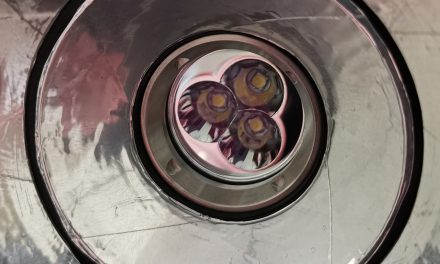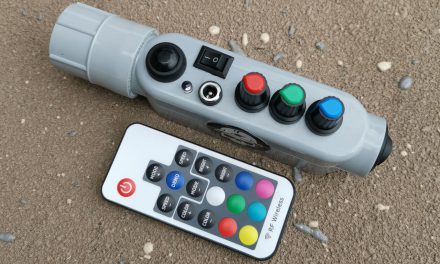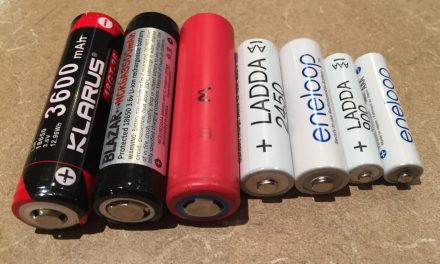
Flashlight Review: Light Excursion Deluxe 1200

Two years ago, there were no flashlights/torches available for light painters with adjustable strobe speed/frequency and brightness. Now there are multiple options, with good competition. Canadian photographer Frank Parhizgar (Light Excursion) puts in huge amounts of R&D into his lights which are purpose designed for light painters. The Light Excursion Deluxe 1200 is his second generation light in the ‘high brightness strobe monster’ category.
Disclaimer
The Deluxe 1200 was sent to me from Light Excursion for an honest and impartial review. Light Excursion lights are available from – website and instagram
Construction
As with other Light Excursion lights, the Deluxe 1200 is handmade, mainly using off the shelf components, with ergonomics suitable for light painters. The Deluxe 1200 looks similar to the excellent Deluxe RGB (which at the time of writing is still the best RGB colour-mixing light in production). The various buttons and user interface is explained in the next section. Instead of an RGB emitter, the Deluxe 1200 has a white Cree XM-L2 emitter with reflector optics which can reach approximately 1200 lumens.
The LE style head is 31mm in diameter which allows for compatibility with most light painting systems. It can be connected to the Light Painting Brushes Universal Connector, or have Light Painting Brushes tools screw directly into the grooved interior with a very solid fit. It also fits snugly into the Light Painting Paradise Adapters. The Lightblades KYO can “unofficially” be connected. Update – it is now also compatible with the Light Painting Tubes system, with a screw in adaptor.
The light uses a RF remote. I would recommend removing the CR2025 battery when not in use to prevent parasitic drain. Button batteries should always be kept out of reach of children. It should be noted that the RF remotes can sometimes inadvertently communicate with other lights that use similar LED controller units.
The battery compartment and internal components are in a container, which requires a screwdriver to remove. The plus side of this is that the compartment is waterproof, and this was successfully tested by dunking the light in a sink for 10 minutes. The downside of this is that a screwdriver is required to change the battery.
The battery holder is designed for rechargeable 18650 unprotected (65mm) and shorter protected (<69mm) batteries. Unfortunately, I experienced connectivity issues at the +ve end, most frequently with flat top batteries. I got the most reliable connection with button top unprotected batteries. I also had difficulty removing longer protected batteries, as my broken nail can attest to.
As I’m not sure if there is any low voltage or reverse polarity protection, it is important to make sure that you insert the 18650 battery correctly, and make sure that the voltage does not go below 2.5V.
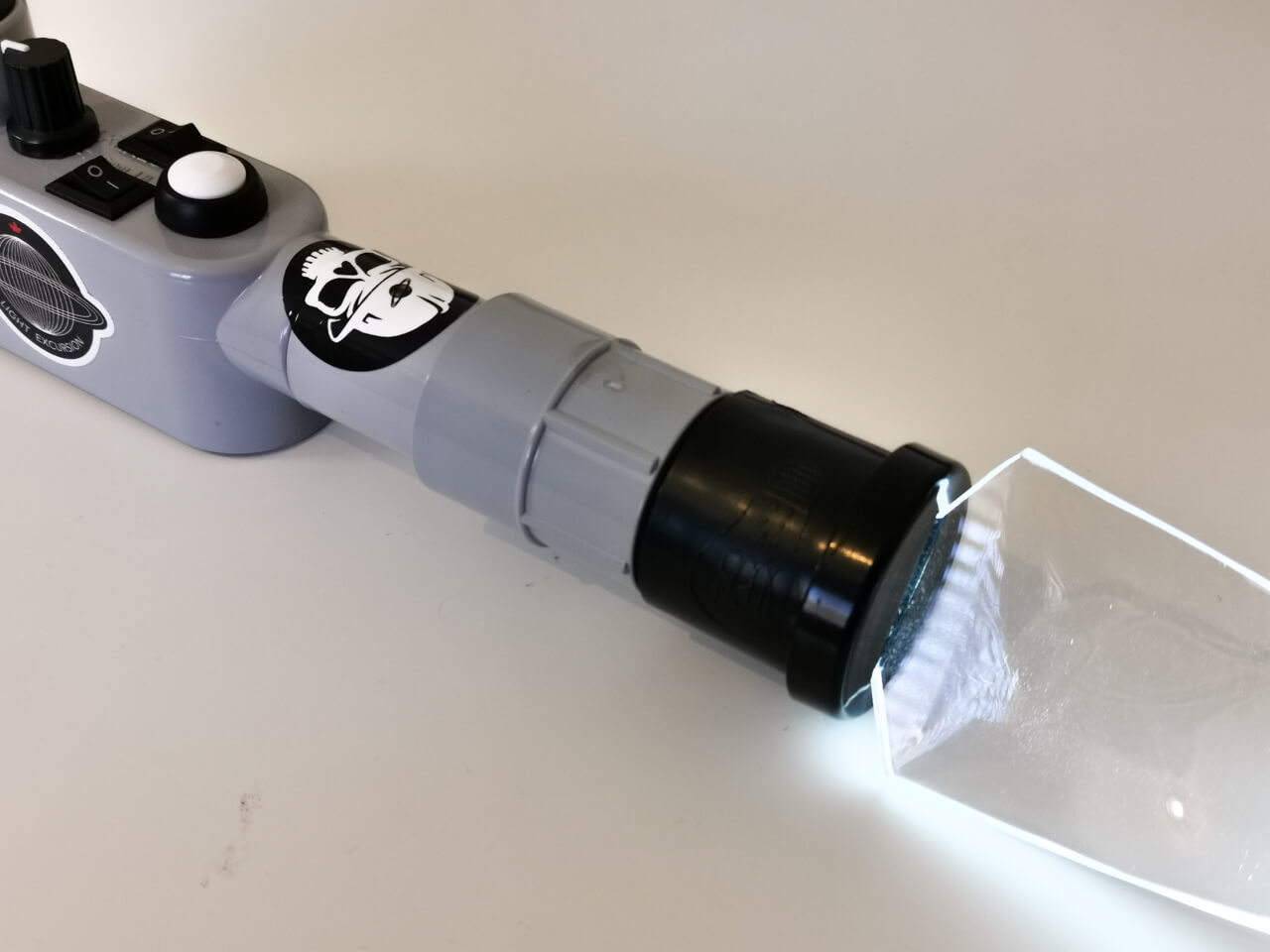
Direct connection for Light Painting Brushes
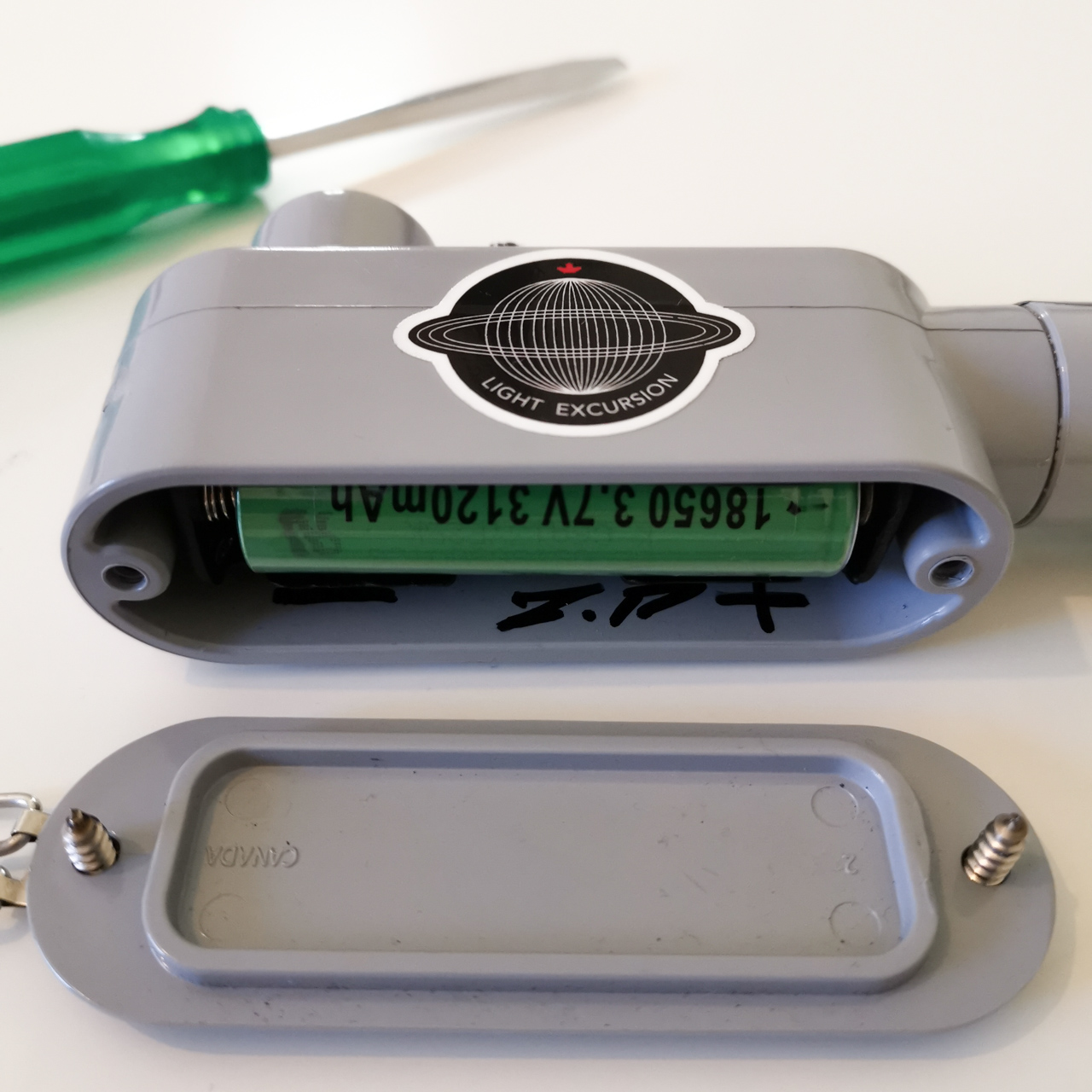
Battery Compartment
User Interface
The main purpose of the Deluxe 1200 is that it is a strobe monster light, with adjustable strobe frequency/speed, multiple strobe patterns, and adjustable strobe brightness.
The user interface has the following switches:
– Master on/off/strobe strobe switch – this switches between continuous on, off, and strobe/dynamic modes (controlled by the RF remote).
– Dimmer on/off switch – enables or disables the rotary dimmer.
– Rotary dimmer – allows adjustment of brightness.
– Momentary switch on/off – enables momentary switch.
– Momentary switch – turns on light only when pressed.
– RF remote – allows control of the strobe/dynamic modes.

Light Excursion Deluxe 1200 User Interface
The RF remote has +/- buttons to move between 11 different dynamic/strobe modes (of which one is continuous), 6(?) different speed levels, and 10 well spaced brightness levels. The light has mode memory, so the light always returns to the last used strobe mode setting. As the RF remote has an on/off switch, the light can also be controlled remotely from a few metres away, which may be useful for static illumination purposes. The 100/50/25% brightness level buttons are only useful for continuous output, and will reset the strobe mode.
There is an excellent range of strobe modes which I’ve named – 50/50 Strobe, Pulse, Fade Up with Blip, Fast Hz Fast Flash, 4 Flashes, 7 Slow 3 Fast Flashes, Slow Hz Fast Flash, Fade Up, Fade Down, and Lightning. These allow for an impressive range of creative light trails. Frequency ranges for these strobe modes are relatively slow. For example 50/50 Strobe mode ranged from 0.6Hz to 10Hz, Pulse 0.6Hz to 7.5Hz, Fast Hz Fast Flash 0.4Hz to 4Hz, Fade Down 0.8Hz to 14Hz. I would prefer the strobe speeds to be able to go to at least 25Hz. The RF remote instructions mentions 10 steps, but I only measured 6 (though some modes may vary).
The user interface offers an excellent level of control for light painting, as the strobe modes, speeds, and brightness are all adjustable. You can switch between continuous and strobe modes on the fly, or even change strobe speed/mode mid scene whilst the light is on (using a combination of the RF remote and momentary switch). I found that the rotary dimmer was not very linear, unlike the Nitecore MT22C for example, but this isn’t a major issue.
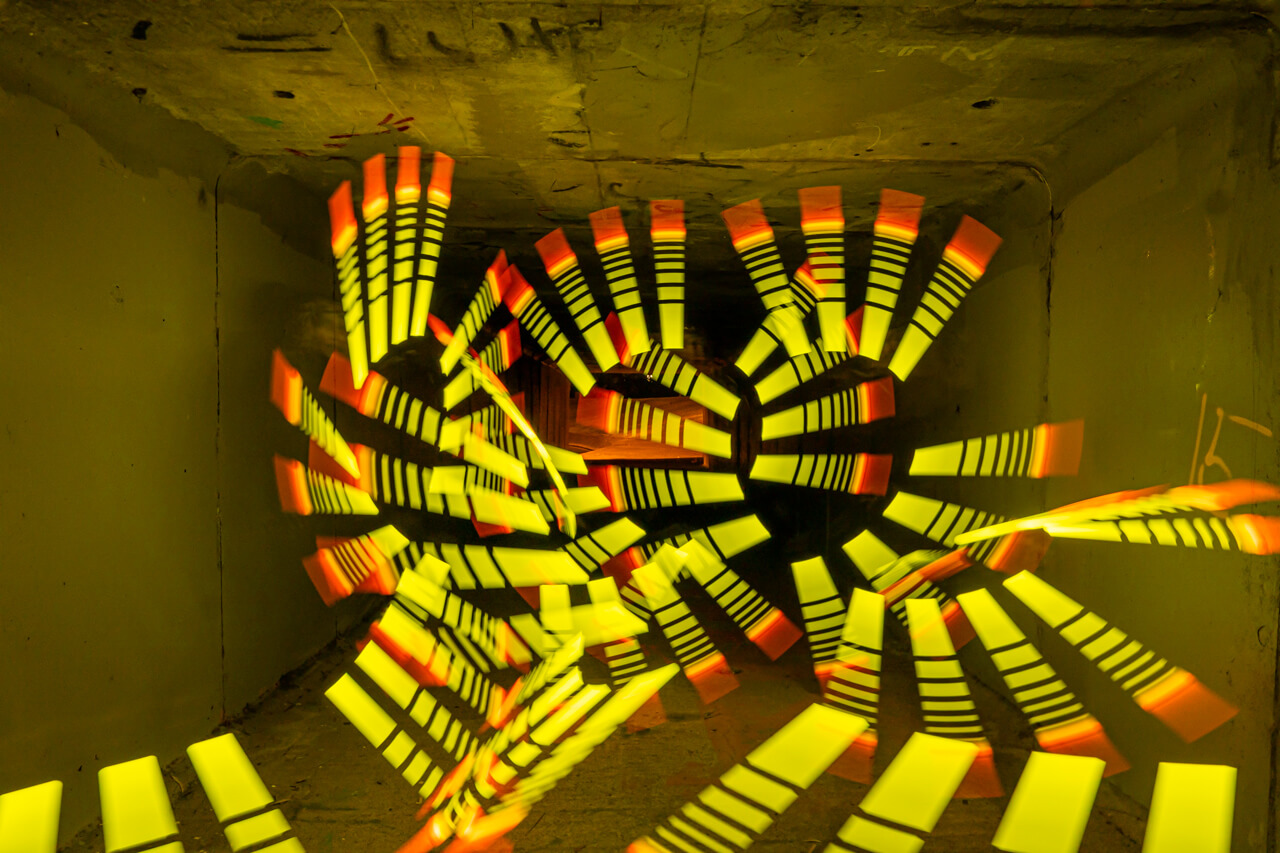
Deluxe 1200 4 Flash Mode
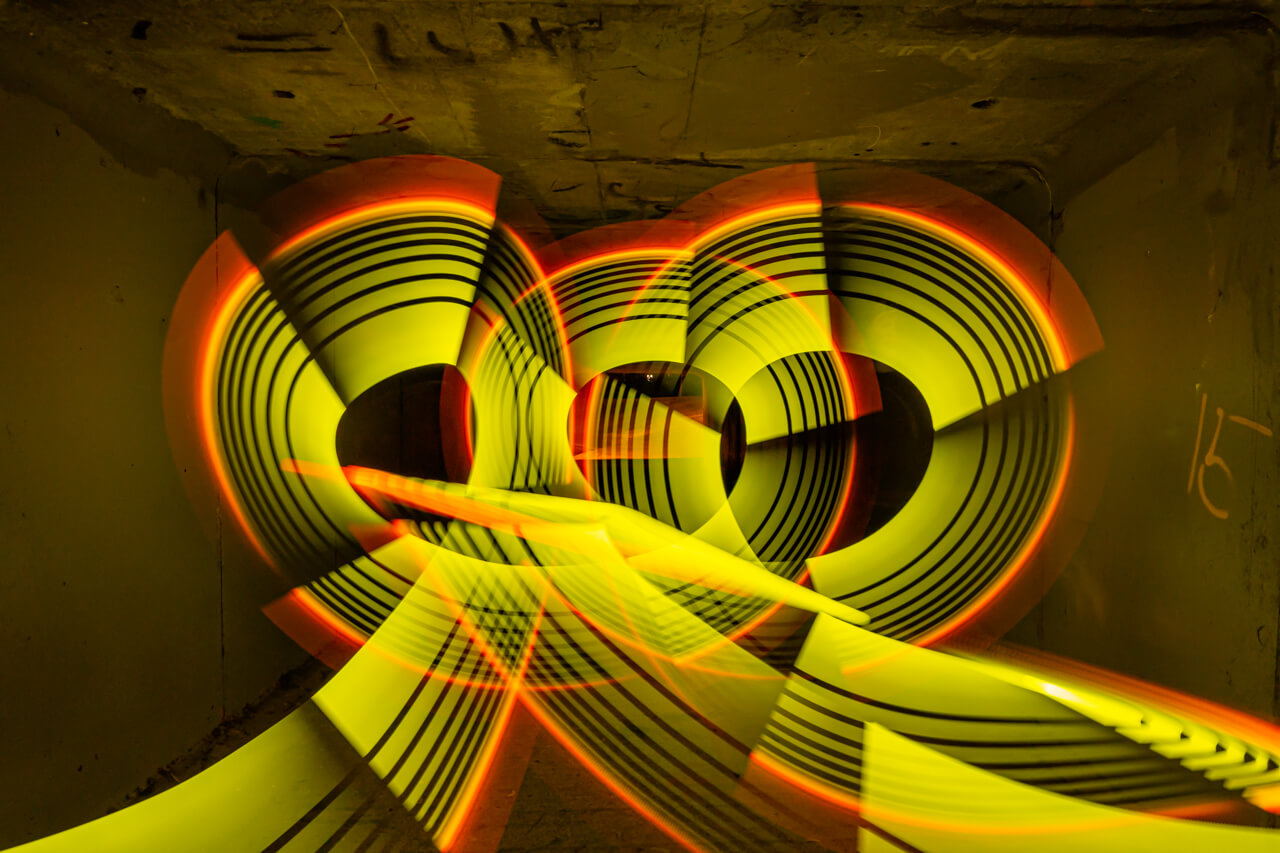
Deluxe 1200 Fade Down Mode

Deluxe 1200 Pulse Mode
Brightness and Optics
The Deluxe 1200 uses a cool white Cree XM-L2 emitter, which I tested to output approximately 1200 lumens. Due to excellent heat sinking, this can be sustained (with some brightness reduction due to decreasing battery voltage) without overheating. This may be very useful for static illumination purposes or backlighting where I usually have to use a much larger and heavier light. Most other lights in this category can only sustain 1200 lumens for a few minutes (or on the case of Lumintop FW series lights – a few seconds) before they automatically step down, or need to be manually stepped down in brightness.
Due to the use of a “floody” Cree XM-L2 emitter, the hotspot is not as intense as some lights. The beam profile is most optimal for light blades and fiber optic brushes, though I found the light gradient in longer tools (such as tubes, swords, rods, etc) to be acceptable (similar to Convoy S2+ XM-L2). The new Deluxe 1300 model uses a Cree XP-L emitter which will have a tighter hotspot, and theoretically may be more optimal for longer light painting tools.
The emitter is very cool white (estimated 6500k), with Colour Rendering Index (CRI) estimated in the low 70s. This is fine for most light painting purposes, but I personally prefer slightly warmer tints (<6000k).
If dimming using the rotary dimmer, then Pulse Width Modulation (PWM) is not visible. If dimming using the RF remote, PWM is visible. Having the choice of PWM dimming for creative light trails, or no-PWM dimming, gets a tick in my book.
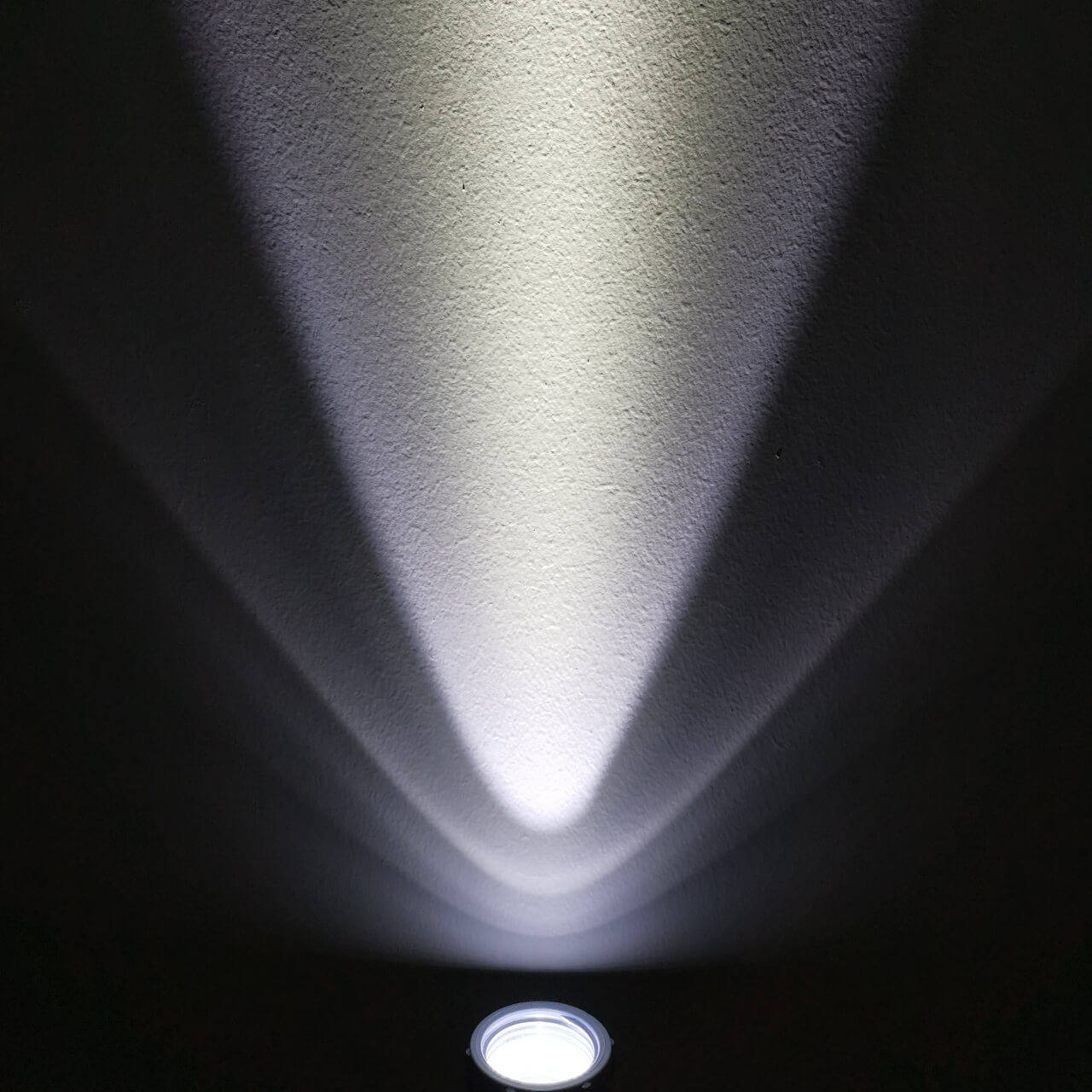
Light Excursion Deluxe 1200 Beam Profile
Conclusion
Things I liked:
– Adjustable strobe frequency/speed AND strobe brightness
– 10 different creative strobe modes, plus continuous output
– Momentary functionality
– Can easily switch between strobe and continuous
– Can change strobe speed/mode/brightness on the fly
– Excellent “best in class” heat handling
– LE Head can connect to Light Painting Brushes, Light Painting Paradise, ‘unofficially’ Lightblades KYO systems, and Light Painting Tubes via adaptor.
– Waterproof
– Dimming with or without PWM
Things I didn’t like:
– Battery connection issues
– Screwdriver required to change batteries
– Fastest strobe frequencies are relatively slow
The Light Excursion Deluxe 1200 has some fantastic features for creativity including 10 different creative strobe modes, momentary switch, ability to change between various settings on the fly, and best in class heat handling. It could however be improved with faster strobe speeds/frequency, and improved battery connections. It’s not cheap, but as with other strobe monster lights, it may replace multiple other flashlights in your bag. I would recommend it to light painters who are likely to make use of the large range of different strobe mode effects, want to change settings on the fly, or need a fairly compact light that can sustain more than 1000 lumens for more than a few minutes.
Since this light was sent for review, Light Excursion has released the Deluxe 1300 with an XP-L emitter for a more throwy beam profile. There are other variations of this light available as well, including internal charging option, M version with auxiliary output, and the rechargeable grenade shaped T1000.
Light Excursion lights are available from – website and instagram
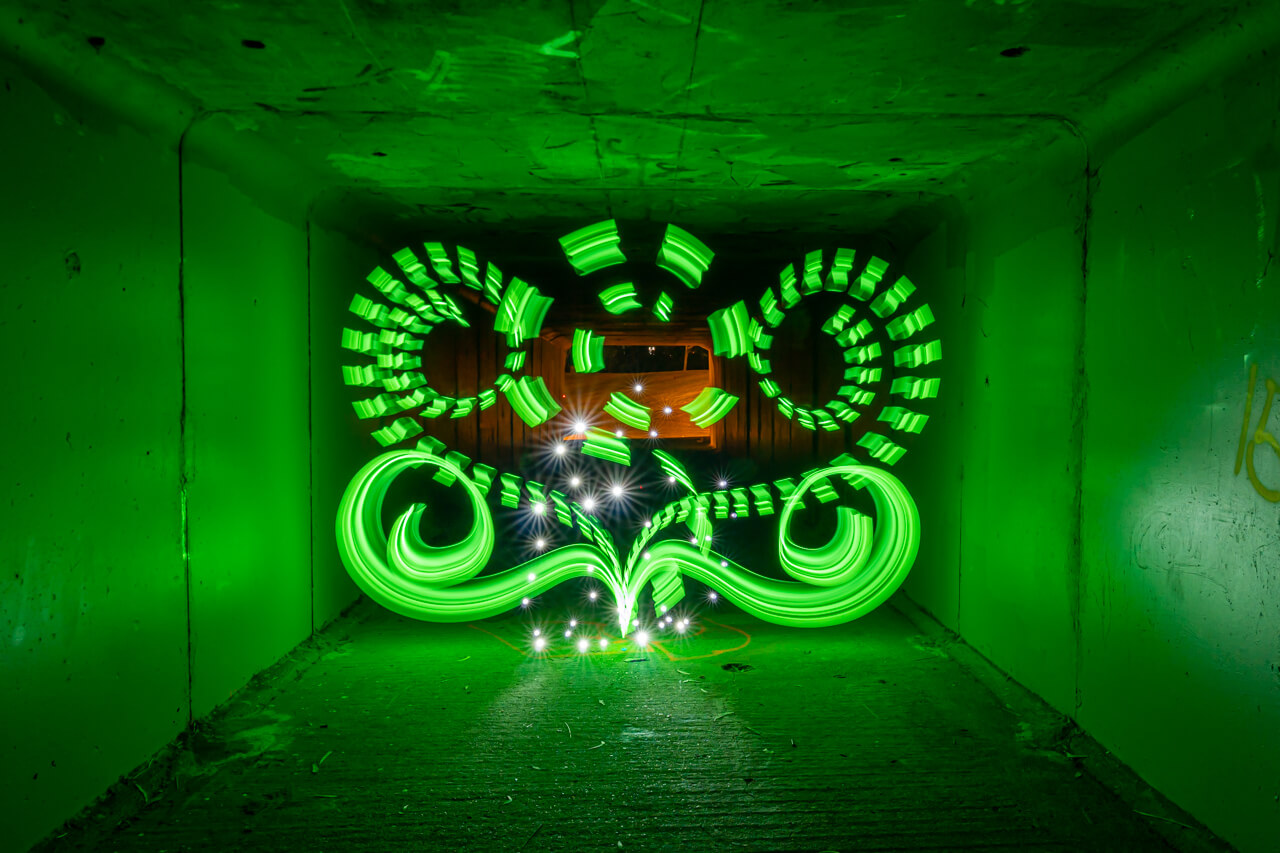
The Deluxe 1200 allows the ability to change between strobe modes and strobe speed on the fly.










